Know what’s tougher than creating great content?
Creating it at scale.
But that’s exactly what’s needed if you’re serious about building a popular blog.
And almost every successful blogger reaches a point where they realize they can’t do it alone.
(After all, how many large blogs can you name where the owner still writes every single post?)
Getting help means outsourcing at least some of your content creation to guest writers, but making the transition from a writer to the editor isn’t easy.
So how can you efficiently manage the content development process when you have dozens of different writers, each with posts in various stages of development?
How can you maintain your high-quality standards without becoming so overwhelmed that you begin feeling nostalgic for the days where you were doing everything yourself?
Truthfully, until a couple of years ago, I didn’t have a good answer to that question.
My Daunting First Dive into Major League Blogging
Almost exactly three years ago, I edited my first post for Boost Blog Traffic (as Smart Blogger was then called).
And honestly, I was feeling the pressure.
I’d edited dozens of student posts as an instructor in Jon’s celebrated guest blogging class, but editing a post by an established writer for one of the most respected blogs on the web felt like an entirely different level of responsibility.
(Though I’m still in the position, so I guess it went okay!)
But Jon’s goal in trying me out as editor was to move from an ad-hoc publishing schedule, where he still wrote most of the posts, to a weekly schedule, where guest bloggers assumed most of the writing duties.
Why? Because his company was growing rapidly and his responsibilities as CEO were demanding more and more of his time. In other words, he’d reached that point where he couldn’t do it alone.
When I took over the reins, there wasn’t much in the way of a process. I’ve learned over the years that Jon’s not much of a process guy. 🙂
Guest authors usually submitted their work as Microsoft Word documents, so we’d pass versions of the file back and forth until the post was ready.
While I loved working with the writers, the practical side of the process was frustrating.
Why Microsoft Word Sucks for Blog Content Development
What I realized in my first few months as editor of the blog was that my frustration was primarily due to the tools we used.
Microsoft Word is a powerful application, but it has so many features that the average user only needs a tiny fraction of them. And for creating blog content, which tends to have fairly simple formatting needs, Word is frankly overkill.
Also, it can introduce the following issues:
- Version control. After collaborating with an author over several drafts, I’d usually find my hard drive littered with several different copies of the post, not always certain which was the latest one.
- Compatibility problems. Sometimes one version of the software won’t open files created in a later version. Or files created on a Mac don’t look the same on a PC. Neither is conducive to happy collaboration.
- Formatting frustrations. Historically, content does not paste very cleanly from Word into WordPress. Even though things have improved, the results are still very dependent on the templates and styles used within Word.
- Large file sizes. Microsoft Word files can quickly become hefty, particularly those with embedded images. Passing large files back and forth via email can be time-consuming.
So if Word introduces more problems than it solves, some of them related to the transition from Word to WordPress, how about developing all your content in WordPress from the start?
Why WordPress Causes Content Problems Too
There’s no doubt WordPress has earned its place as the preeminent platform for those who want to start a blog.
But it’s primarily designed for publishing content, not creating it.
Developing your content in the same environment you’ll publish it may seem appealing, but there are some good reasons you might want to do it somewhere else, particularly when working with external contributors.
Here’s why a separate content development environment may be a better idea:
- Clean separation of published posts and posts in development. When working with guest authors it’s inevitable that some of those posts will get delayed or abandoned. Do you really want those unfinished posts cluttering up your WordPress database?
- Reduced complexity and risk. Giving lots of different people access to your WordPress installation may not be such a great idea. Sure, if you set everything up right, security shouldn’t be an issue but make a mistake with user roles and you could open yourself up to a whole host of problems.
- Content safely stored outside of WordPress. If your WordPress site gets hacked or accidentally wiped you can always restore from backup, right? Well yes, in theory, but we’ve all heard stories of people who lost all their content because they neglected to take a backup or because their backup solution wasn’t quite as bulletproof as they imagined.
Of course, if you’re determined to keep everything in WordPress, there are clever plugins that will turn your installation into a fully blown editorial management system with pre-defined workflows.
But that’s probably overkill unless your blog is already huge, and it still lacks some of the advantages above.
So what’s the alternative? Google Docs.
Two years ago we switched to a simple editorial workflow based on Google Docs, and we haven’t looked back.
In fact, since then, we’ve used it to develop over 300,000 words of content for this blog!
3 Reasons Google Docs Rocks for Content Collaboration
If you’ve not used Google Docs yet, it’s one of several lightweight Office-style applications that Google provides via Google Drive, its cloud-based storage service.
Some people use Google Drive solely for its remote storage, but if you ignore the apps that come along with it, you’re missing a trick.
In addition to Docs, Google also provides other online apps, free to anyone with a Google account, including:
- Google Sheets — a spreadsheet app which can replace Microsoft Excel for most tasks
- Google Slides — a presentation app that duplicates much of the functionality of PowerPoint or Keynote
- Google Drawings — a drawing app for creating simple diagrams
But why is Google Docs in particular so well-suited to blog content development?
Let’s take a look at a few reasons:
- Cloud-based — conveniently maintains a backup of your content, so you can always access your up-to-date posts-in-progress from anywhere, without an internet connection
- Tracked changes — automatically records every change you make to a document, so it’s easy to revert to any previous version of your work
- Native collaboration features — natively supports editing by multiple authors, including in-document conversations via comments, edit and suggest modes
On top of these advantages, it’s also free!
A Crash Course in Google Docs for Busy Bloggers
Even if you have worked with Google Docs before, you may not be aware of its full capabilities, so let’s take a quick look at some of the key features.
Creating a New Document
Creating a new document is easy. From within your Google Drive, just click the big, red “New” button and select “Google Docs” from the drop-down menu.
This will create a new Google Docs document in your Drive.
Then, click “Untitled document” to change its name:
Once inside your document, most of the toolbar and menu options should look familiar — Docs is much like a simplified version of Microsoft Word and offers many of the features you’d expect, such as:
- Bold, italic, underline text styles
- Plain and number bullets
- Customizable heading styles
- Tables
- Headers and footers
As you add content to the document your changes are automatically saved to the cloud, so there’s no chance of losing your valuable work!
Another nifty feature is offline editing. With this enabled, you can work on your documents even without a network connection — your changes will sync once you’re back online.
Sharing Your Document with a Collaborator
While Google Docs also functions well as a simple word processor for writing your posts, it comes into its own when other people are involved in the process.
One common scenario is where you have guest authors developing content for your blog. Another is where you’re working with an editor to polish your work.
Sharing your document with someone else is as simple as clicking the blue “Share” button:
This brings up a “Share with others” dialog box:
You have three options when granting permissions:
- Can edit — the recipient has full permissions to edit the document, adding and deleting content
- Can comment — the recipient can’t edit the content but they can add comments in the margin
- Can view — the recipient has read-only access, in other words they can see the content but can’t edit it or add any comments
Once you’ve selected the appropriate permissions, enter the email address of the person you’re sharing the document with (they’ll need to have a Google account). Optionally, you can add a personal message to send along with the sharing notification.
Adding Comments to Existing Content
Google Docs supports adding comments within your document. These are text notes that are visible within the document but aren’t technically part of the content itself.
Use comments to:
- Leave notes for yourself, e.g. “Remember to check this statistic before publishing.”
- Leave notes for other collaborators, e.g., “Can we find a better example for this?”
The powerful thing about comments is that they are attached to a specific context within the document, which makes them perfect for editors working with guest authors. If you don’t like the particular word choice or feel a sentence is redundant, you can attach a comment to a designated piece of text.
Adding a comment is simple. Just highlight the text you want to comment on and either press the comment button or select Insert > Comment from the menu bar.
However, comments in Google Docs are much more than virtual sticky notes. They can be the starting point for an entire conversation, allowing collaborators to discuss parts of the document in context.
When working with guest authors for Smart Blogger, I’ll often use comments during the early stages of the editorial process to highlight sections of their posts that are unclear or need more examples.
These annotations allow the author to see exactly which part of their post I’m talking about and add their own comments or reply to mine with questions and clarifications.
Once a comment has outlived its usefulness, e.g. after you’ve address the issue it originally highlighted, you can click “Resolve” and it disappears from view (although it’s still available in your comment history).
Suggesting Changes to Content
When collaborating with someone — a writer, co-author or editor — you may want to make changes to the content they’ve written. It’s clearer (and displays better collaborative etiquette) for you not to make edits directly to their work but instead, make suggestions they can review and accept or reject.
This feature is particularly useful when a copy editor — who edits for grammar, accuracy, and consistency — reviews a post because it allows them to highlight possible issues within the text.
To do this you must switch from Editing mode (where changes happen directly in the document) to Suggesting mode:
You can do this by clicking on the “Editing” menu at the top right of the horizontal toolbar and selecting “Suggesting” from the drop-down menu:
Once you’ve switched to Suggesting mode, any changes are highlighted and shown alongside the original text. A note also appears in the right-hand margin describing the change and giving the option to accept (tick) or reject (cross) it.
Here’s an example:
In addition to accepting and rejecting collaborators’ suggestions, you can also add a comment to start a discussion around the suggested change.
A Simple Workflow for Managing Guest Posts on Your Blog
At Smart Blogger, we’ve been using Google Docs for developing guest posts (and many of our own posts) for over two years, and in that time we’ve developed a simple workflow that simplifies the process of working with external authors.
It’s a huge improvement from those frustrating early days spent wrestling with Microsoft Word documents!
Before we look at the precise workflow, it’ll help to understand our basic process for developing a guest post from start to finish.
Here’s an overview:
- The guest author writes their first draft based on an agreed topic or headline.
- The blog editor or owner provides feedback on the draft to the author for their next draft.
- The author makes revisions (repeating stages 2 and 3 for several drafts until the post requires no further changes from the author).
- The copy editor makes any corrections/suggestions to the draft.
- The final draft gets formatted into WordPress and published.
It’s straightforward enough in an overview, but we’ve found the process can go awry without an agreed workflow to keep things running smoothly.
So here’s how it works…
Step 1: Create a New Folder in Google Drive
As soon as we’re ready for a guest author to start working on a post, we create a new folder for it in our company’s Google Drive.
Here’s the basic folder structure we use for all our guest posts at Smart Blogger:
The roles of the individual folders are as follows:
- Posts – the parent folder containing all of our blog posts
- Author – contains all of the posts by a single author
- Posts – contains all of the files relating to a particular post by that author
- Draft – contains snapshots of all the drafts for the post
Here’s a specific example — the folder structure for the post you’re reading right now.
Once we create the folder structure, we populate the post folder (in this case “Google Docs Workflow”) with new copies of a handful of simple templates we reuse for each new post.
The first document is a blank blog post template where the author will work on their post.
In addition, there are a couple of other files we create — one for a list of possible headlines (You know how we love tweaking our headlines!), and another with post metadata — such as the proposed slug and meta description, which is completed before publication.
Here’s what the blog post template looks like before the author starts working:
If you want to use our template, you can grab a copy here (click File > Make a copy while logged into your Google account).
Step 2: Share the Template with the Post’s Author
Once we set up the folder structure, it’s time to share the post template with the author, exactly as we discussed above.
We grant them “Can edit” permissions so they can add their content and usually include a short note that gets sent with the sharing notification:
Step 3: Create a Copy of Each Incoming Draft
While the author is working on the post, we tend to leave them to it — they’d probably find it disconcerting having us watching over their shoulders as they write!
But once an author tells us they’ve finished with the current draft — usually by email — the first thing we do is create a copy, add the label Draft 01 and drag it into the Drafts folder:
Google Docs are effectively snapshots of the content at that moment in time, minus any comments and revision history.
But why create them? Is it really necessary, particularly since Google Docs automatically maintains a complete record of the evolution of the document?
We find it useful because while Google Docs tracks changes, writers and editors tend to think in terms of individual drafts. So it can be helpful when we need to quickly review a snapshot of a post at a particular stage in its development.
For instance, a post doesn’t always develop in a straight line, and it’s valuable to give the author notes like “I feel this section worked better the way you wrote it in Draft #2.”
Step 4: Review the Current Draft and Add Comments
Once I’ve created a snapshot, I’ll review the latest draft and add detailed comments to help the author understand what I require for the next draft.
Next, I’ll drop them an email letting them know I’ve left comments for them to review.
Then, I’ll keep an eye out for notifications from Google of replies to my comments — those in-document conversations I mentioned earlier — and jump into the document to resolve any questions.
At that point, it’s time to wait for the author’s next draft — effectively looping back to Step 3, creating a new copy and so on.
Note that the file the author works on is always the same, which greatly reduces the potential for confusion. Before our Google Docs workflow, we’d typically exchange Microsoft Word files via email and after a few drafts, it was often difficult to be sure you were looking at the latest draft.
Step 5: Submit the Draft for Copy Editing
Once the draft has reached the point where the author has addressed all my comments and suggestions, and is close to being ready for publication, it moves into a new phase – making any final pre-publication edits.
Sometimes I’ll make some minor edits to make sure the post meets our house style and tone – I’ll create a new copy of the draft labeled “Final Edit” and work on it there.
Once happy, I’ll change the label to “Copy Edit” and pass it over to our copy editor who’ll make any changes in Suggesting mode before handing it back to me.
Once I’ve reviewed and accepted (or rejected) any copy changes, the Google Doc is finally ready to be copied and formatted into WordPress.
At this stage, I change the label to “FINAL” so that it’s completely clear that the post has reached the end of its development.
Step 6: Format the Post in WordPress
The final step is to copy the content across into WordPress and format it. It’s fairly straightforward but does requires a couple of manual steps, specifically:
- Any embedded images must be uploaded to WordPress separately and manually added to the document.
- A small amount of HTML clean-up is required, but it’s only a minute or two’s work with a text editor.
Admittedly, it’d be nice if these steps weren’t required. They’re a byproduct of pasting directly from Google Docs to WordPress. A small niggle in an otherwise fairly elegant process.
However, depending on your exact formatting requirements and the number of posts you publish in a typical month, it could make sense to look into a tool like Postable, which automates this part of the process for you.
But let’s assume you’re doing this part by hand. Here are the steps for moving your post across.
1) Copy and paste your entire post into the WordPress Visual editor.
Using Visual mode (instead of Text mode) all of the important formatting will be preserved — text styles, heading levels, bullets, etc.
As mentioned before, images will not come across when pasting. You’ll need to handle those separately.
2) Switch to Text mode and remove any unwanted HTML markup.
When switching to Text mode within the WordPress editor, you’ll see your formatted post in its “naked” HTML form.
The code created by this process is pretty clean — particularly if you use our Smart Blogger template above — but there are still a few recurring “artifacts” that you’ll need to fix by hand.
Fortunately, they all follow a predictable pattern so performing a global search and replace in your favorite text editor will quickly do the trick.
Here’s what you’ll need to do:
- Replace all occurrences of <li style=”font-weight: 400;”> with <li>
- Remove all occurrences of <span style=”font-weight: 400;”> (replace with empty string)
- Remove all occurrences of </span> (replace with empty string)
The exact text you need to replace may be different with a different starting template, but it should still amount to removing opening and closing span tags and styling from any other tags.
Copy and paste the code into the text editor, make the changes, then copy and paste it back into the WordPress editor (Text mode).
3) Upload any images to the Media Library and add them to the post.
It’s up to you how you handle images. We like our authors to embed them in the Google Doc because that makes the post easier to review and keeps all the content in one place.
If you do it the same way, there’s a neat little trick you can use to grab all the images within the document.
If you select File > Download as > Web page (.html, zipped) from within your Google Doc, you’ll get a zip file.
Unzip that file and you’ll get (amongst other things) an “images” folder with all of the embedded images in their original file format. Yay!
You may choose to rename the image files for clarity or SEO purposes, but once done, you can select the whole group and drag it to the “Upload New Media” page within WordPress.
Then it’s simply a case of adding the images to the body of your post as you normally would.
Turn Your Blog into a Content Machine with Google Docs
There’s no doubt — content is the fuel that drives your blog’s growth and potential to make money.
But as important as it is, smart bloggers know when it’s time to outsource.
Because the sad truth is, if you spend all your time creating content, your blog will never reach its full potential.
That’s why you need a process that will scale as your blog grows, and you begin working with talented guest writers.
You need a simple system that’ll enable you to publish more quality content while spending less time doing it.
Combine Google Docs with a simple editorial workflow and you can create a powerful content machine that will propel your blog into the stratosphere.
(And even if you’re not ready yet, you’ll still benefit from making Google Docs your go-to content development tool.)
So what are you waiting for?
Let’s add some fuel to that fire.

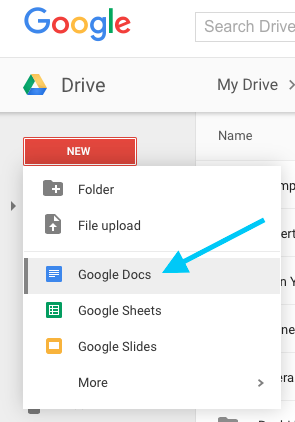


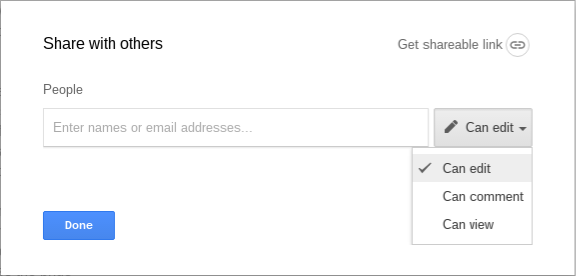

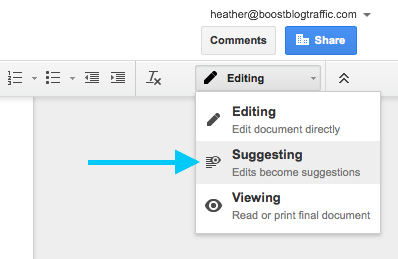
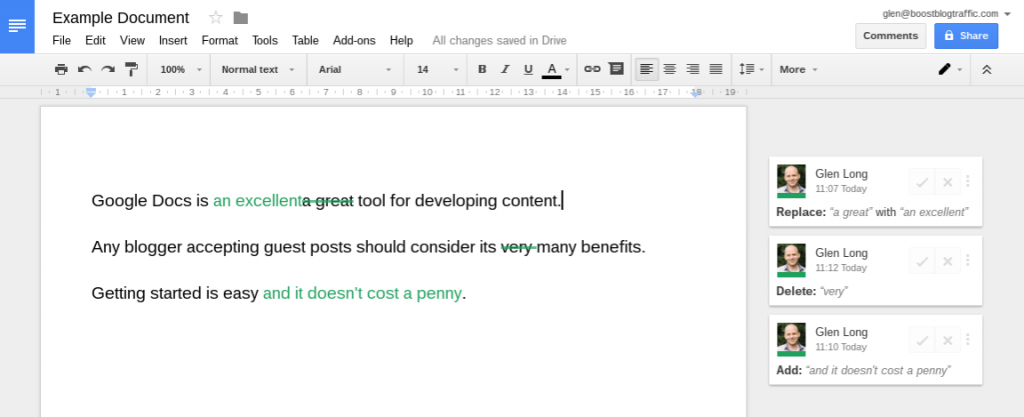
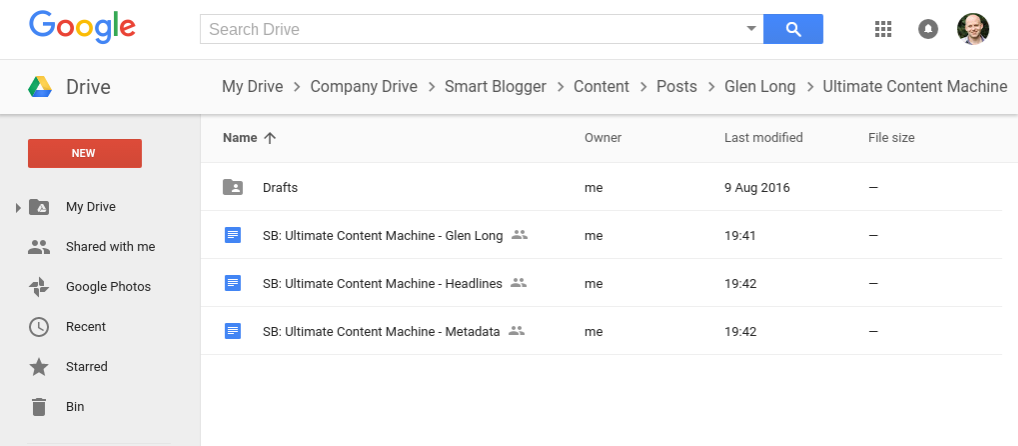
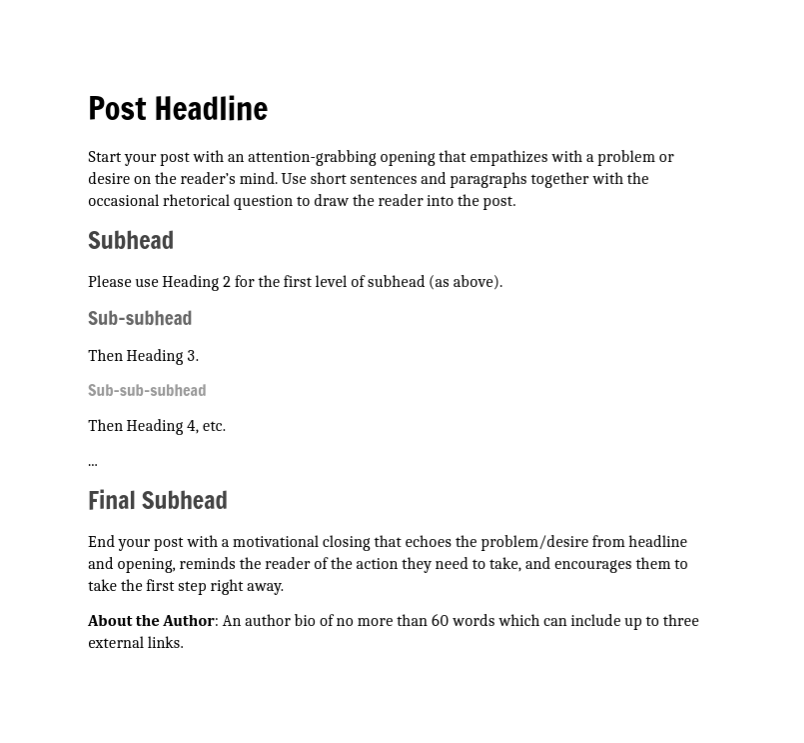
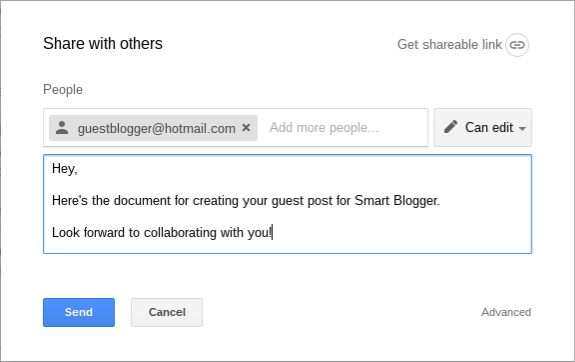


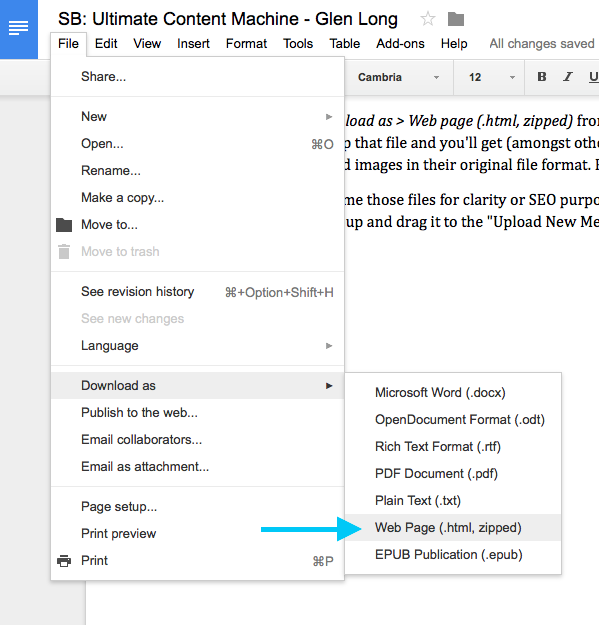




I can tell from the introduction that this is going to be fantastic.
Give me a good week, and I’ll be a great student based on this blog post! 😉
Thanks Glen!!
Thanks Ross! Glad you enjoyed the intro. 🙂
Now that I’ve read the rest I want to say thank you even more!
This is a great step by step articles, which are my favourite!
😻
One of the things I love most about the bloggers here – they are not afraid to share the process of greatness!
None of us could be half as awesome without these breadcrumbs from you, the great gurus of generating good content.
Thank you, Smartblogger – and thank YOU, Glen!!!
Hey Mai,
It’s true that process isn’t exactly the glamorous side of blogging but it does help us run things smoothly – or at least smooth-er!
Thanks for dropping by.
Glen.
Hey Glen,
Thanks for sharing this amazing hack!!
Tweeting this out 🙂
Nice one. Thanks Nadeem!
Nice insight, Glen. Thanks for this!
Thanks Leanne! As someone who’s been on the inside of the process and survived – that means a lot. 🙂
Glen, A new blogger here, not reached to a level where I can outsource but definitely plan to invite contributors shortly. You are right, at some stage you need to develop other writers to write for you.
Already realised the importance of Google Apps (inc. Docs) and have started using it for collaboration etc. In fact bought the paid version (Unlimited) and started using it. Your article just resonated with me and related to my circumstances so much. Thanks for a detailed guide.
Thanks Ahmad.
We use Google Apps for our company email too. It’s actually very good. I think the basic tools are the same whether you’ve got Apps or just Gmail but I’ve been a fan for a while.
I can’t count the number of times having everything accessible in the cloud has saved me.
Wishing you all the best with your blog!
Cheers Glen.
Thank you for the template and the great example of it in action in this post!
You’re welcome Sue!
Hey Glen,
Great post! It’s a good system for any editor.
Best to you,
Patrice
Thanks Patrice. It works well for us. 🙂
I love reading about workflows… thanks for showing us behind the scenes Glen.
Nice to meet a fellow process nerd Bryan. 🙂
This was indeed a great read!
Thanks Deji!
I have never used Google drive for anything in the past other for storage. Now you’ve given me an eye opening blog post to using it well. Thanks
Glad to have opened you eyes Saheed. 🙂
It really is a great tool once you get used to it.
Cheers,
Glen.
Thanks Glen for adding interest to a relevant topic that’s not overly exciting. Moving to using Google docs for blog writing is definitely something I need to do. Your easy to follow tips are appreciated!
Thanks for inspiring me to add creativity when writing about topics that don’t easily trigger readers’ emotions.
~Keri
Thanks Keri! Yes that is the challenge when writing about topics that are naturally a little more “dry”. Funny you should talk about emotion as it was the deep frustration of working with Word files that prompted me to look at an alternative.
You listed all of the reasons I love Google Docs for my content writing in a clear and concise manner. Thanks for being such a generous source of information for writers.
Hi Jenette. Nice to meet another convert. 🙂 No problem – we’re here to help!
Great article, Glen – thank you! One cool and useful trick I recently discovered in Google Docs is that you can show an outline of the document on the left side of the page by going to Tools > Document Outline. It’s a much faster way of navigating through the document, especially when you’re working with a long document. You just click on the subhead in the outline, and it takes you right to that section.
Hey Beth. Good to see you. That’s a great tip! I think I stumbled across that feature a while ago but promptly forgot it existed. Thanks for reminding me and of course for reading the post. 🙂
Hey Glen,
I love Smart Blogger’s approach to working with guest authors. Too often around the web you see guest posts which clearly had no editorial guidance. Your level of care to the craft is what drew me to SB right away.
My WordPress dashboard is FULL of drafts and it feels cluttered. I’m definitely switching to this new approach, mainly to keep my posts area clean.
Thanks for the thoughts here.
Hey Ayodeji,
Yes we do put our guest writers through their paces. Hopefully the results are worth it – though you’d have to ask some of our writers what they think! 🙂
Pleased to hear I’ve persuaded you to switch to a new approach. Mission accomplished!
Cheers,
Glen.
Hi Glen…followed your instructions to get rid of the tags in my Notepad editor, by using Edit/Replace/Find What then putting the span code in the Find What area and leaving the Replace With area blank.
Notepad took out the code as requested and then I copied/pasted the new code without the <span tags into the text editor of wordpress.
I saved everything and viewed that it was OK in the editor, however when I checked the code again after publishing in WP to make sure it was really gone…there the span tags were again.
Am I doing something wrong? Thanks for the help.
Hmmm. Can’t say what went wrong there. The steps look correct so far as I can tell.
If you repeat the process, and Click “Update” to make sure the changes have been saved, do you get the same results?
Thanks Glen – we have been using google docs but not to it’s fullest potential. Great tips for writing more effectively!
Thanks Shana. Do explore its potential. I think you’ll be pleasantly surprised. 🙂
Fantastic sharing Glen. I’ve been using Google Docs to write my blog posts during lull periods at work (Well, I can’t be seen idle when I’m paid :p). Glad to read this post – It certainly helps us to manage our content in a more efficient way, so that we could save some time. Like I just found out through Barb’s comment that Notepad has a Find What/Replace With function…great!
Ah yes. That’s another advantage of Google Docs – you can work on your own content at work without getting caught. 😉
Great that you learned something from a fellow commenter too!
Thanks for stopping by Sharon.
I’ve been a heavy user of google drive, docs, spreadsheet and all, but didn’t realize many collaborative functions mentioned here!
Very helpful article, thank you!
Hey Stephen. It’s strong on collaboration for sure. Does a great job of taking discussions about content out of email and into the document, where it belongs. Cheers, Glen.
I’m the only one who currently posts on my blog, but I’m starting to accept guest posts so I’ll definitely be introducing this kind of process! Plus I think I’ll use it myself – I keep saving my Word files in Google Drive, when it would just be easier to use Google Docs! Brilliant post!
Hi Icy,
If you use this process for your guest posts, you be off to a great start. Makes you look more professional in the eyes of your invited writers too.
One extra tip – create a simple style guide for your writers explaining what you expect from them. It’ll save you work down the line I promise.
And yes, while you can store Word files in Drive, it’s much slicker to create native Google Docs instead. You can always download as Word files from Drive if you need to anyway.
Cheers,
Glen.
This is a very helpful article! I am working on multiple blogs and this would be a great process to follow to keep everything in one place. Brilliant!
Shared on LinkedIn and Twitter. 😉
Hi Angela,
Yes it would work great for multiple blogs. In fact, you could add an extra layer in the structure and have a separate folder for each blog:
Blog 1
> Posts
Blog 2
> Posts
etc.
Thanks for reading the post – and thanks for sharing!
Cheers,
Glen.
Really cool rundown Glen!
I prefer to use Scrivener for my post and newsletter writing, but then again I don’t have a big blogging team. It’s only me. 😛
But I like Scrivener because you can actually create full manuscripts from your posts and then turn those into freebies, all from one location. Also saves my notes and research which is priceless to keep me focused.
But I think once I get an editor, I will start using google docs a lot more.
Hi Alex,
I’ve heard very good things about Scrivener. I think I even have a license for it somewhere. 🙂 It certainly seems to attract a passionate following.
I think if you’re writing solo it can be a great tool and if you’re writing a major piece of work, like a novel, some of its features are invaluable, but it’s weak on collaboration as I understand it.
Anyway, good to see you. Thanks for dropping by.
Cheers,
Glen.
How do you do it Glen? If frustration was your muse, then I hope she lands on your shoulder again. You take something that has lots of moving parts, and walk us through it so it becomes a clear blueprint. What a great resource! Now we can make our work with editors — and hopefully someday as editors — more effective and less frustrating for everyone. Thanks for sharing your insights so that we can focus on our writing and not technological frustration until the day comes when we can’t “go it alone.”
Thanks Kim. Glad you enjoyed the post. 🙂
As regards your follow-up question about security, to be honest I haven’t heard of any issues. We use Drive widely within the company – not just for editorial collaboration, but also internal documents.
There are some more advanced permission settings which include the option to make files publicly accessible so you need to be careful with those for sure.
That said, I will look into this a bit more to see I can find any reports of issues.
Cheers,
Glen.
P.S. Glen — I have heard some reports of security issues working on Google Docs in Google Drive. Have you had any issues with that?
Hey Glen 🙂
This is one straightforward system to follow. I am snatching it!
Cheers,
Danny
Great to hear that Danny. Hope it works as well for you! 🙂
Well Glen, first of all, it’s nice to see a face to go with the emails.
I’ve used Google Docs/Drive for some time. I do a crazy thing where I write each separate section in Notepad and paste it into the document. You gave me some ideas for moving to WordPress although I usually just add it to the text editor in the WP instead of the visual.
I have tons of folders now and I usually start one for each new project/customer. For instance, if I were writing posts for Smart Blogger, I would start a new folder as I build out my topic ideas, etc.
The problem or the disconnect, is getting it from there to the client unless he or she has me to upload it myself.
This is a terrific process and the way I would go if I were an online editor.
I am also looking forward to trying the new Airstory by Copyhackers when it comes out, but for now, the Google suite is the best way to go for me. . . unless, for some reason, the darned thing is having issues.
Thanks!
Hey Todd,
Thanks for your comment. Glad to hear you’re already using Docs.
When you need to share outside the Drive ecosystem, e.g., to share a deliverable with a client, you can always download as Microsoft Word or PDF. However, if you allow changes to the downloaded version, then things get a little harder to track.
I haven’t heard of Airstory, but I’ll be sure to check it out!
Cheers,
Glen.
Great insight! I use Gdocs for all my own writing, so it makes sense to use it when you scale. Do you have any insight on where to find the best writers, what sort of compensation to offer, and how to build relationships with them for the long-term?
Hi Stephen,
In the past I’ve staked out other popular blogs to find new writers and then approached them via email. We also had a “write for us” page for a while and did get some good writers that way, but the quality is very variable.
In terms of compensation, the ideal situation is where you’ve built your blog to the point where it’s just popular enough be attractive to other writers as a platform for their guest posts. Before that point you may need to pay for posts to get the right level of quality – probably in the range $100 – $300 depending on scope and depth.
As for building relationships, make sure you promote the heck out of their work when they write for you, and always look for other opportunities to help them out. Show an interest in what they’re doing and drop them a friendly email every few weeks.
Hope that helps!
Cheers,
Glen.
Hi Glenn,
Wonderful article! Your template provides the correct headings after I paste a Gdoc in my blog post. Also, thanks for your .zip image file technique. From now on, I will integrate Gdocs in my blogging workflow. Besides, I can access my drafts from all my devices, a big plus!
Heading off to Tweet it right now.
Thanks Steve. Glad you’ve already got the template working for you. 🙂
Yes – once you get used to the idea that your documents are available from anywhere on any device it’s hard to go back to local files and wondering where the latest version is.
Thanks in advance for the tweet!
Glen.
That is true, creating content at a scale is not possible by a single person and here collaboration comes into picture.
For a blog Google docs are enough but large organizations are using much advanced tools like sharepoint.
Thanks for the wonderful post Glen.
Hi Glen,
Thanks for this pretty cool technique. I’ve have been reading most of your pieces and love’em all!
Thanks and regards!
Hi Glen,
Incredibly helpful post because I live in Google Docs these days after buying a Chromebook 2 months ago.
I write my guest posts and posts for my blog in Google Docs. Easy peasy. But you added some nice tips and tricks I had not uncovered. Appreciate it.
By doing the legwork in Docs you save yourself time, energy and heartache versus passing Word Docs back and forth or, versus doing all your blogging work in Word.
I do send folks Word Docs if fellow bloggers request this for guest posts but I do all work in a Google Doc then simply save at the end, if a Word Doc is requested.
Other than that, if sharing a post I just add the fellow blogger to edit through Google Docs. So easy and it saves both parties precious time.
Thanks for the helpful share Glen.
Ryan
Thanks for this post Glen! Microsoft Word has a lot of technical issues these days.
I’ve been using Google docs for about 3 months or so, and I love it. I don’t even use word anymore.
It’s so easy to organize files and collaborate with other’s.
I think I’m about to cancel my Dropbox account as well and move everything over to Drive.
I’ve been wondering a lot lately about how to scale the content creation of a blog, and how Smart Blogger does it.
So I feel like you wrote this just for me.
Thanks Glen!
I am using google drive for around 3+ years and it was amazing experience, It help me maintain my reports and allow me to share it with my client so easily, I don’t have to maintain emails or report in some folder,
Hi Glen,
This post came just in time when I was struggling to find an alternative to Word. Can’t thank you enough for the timely help!
Thanks
Mohit
Hey Glen,
Thanks for the great post, but I’d like to play the devil’s advocate here. 🙂
[disclosure, my company built a content marketing platform and I’m biased towards all-in-one solutions]
Google docs is a fantastic tool for content creation, but i wouldn’t recommend it for someone who’s committed to building a business using content, at least not now that content marketing platforms started popping up.
Sure, free tools are perfect to get started, test the waters and finding processes that work, but a well designed content marketing software embeds and automates smart processes, taking of your plate both organizational and repetitive tasks, so that you can invest more time in research, content creation and distribution.
So, thinking in terms of scalability (and efficiency, since you can’t scale on inefficiencies), once the idea has been proven, wouldn’t it be better to use a tool specifically designed for content creation?
Thanks again for the post, looking forward to your reply!
Great post and it is really worth to read it. I am going to bookmark this blog and waiting for the next blog post.I like how you provide options that anyone can implement.Passing this on to friends for sure
Hi Glen,
Great post and I enjoyed reading it. Google docs & drive are great tools to share and collaborate. I will follow your guidelines and see how it works for me.
This is crazy! But about the suggest edit in google doc? that i haven’t heard of. Thanks for this wonderful information here . To think that i have been using google doc for years and haven’t thought about this? Thanks Glen.
I’ve been copying the Google Docs finished text over to Wordpress for quite some time and was not aware of the need to make the HTML changes. It looks okay, but curious what the downside is for leaving the HTML backside coding intact from Google Docs? Also, when you say ’empty string’ are you meaning that would now be ? Is that an empty string?
Great info and thank you!
We switched to using google docs to write editorials via share links, we really enjoy it however we have come across a major hiccup.
How do you caption an image ? The Image add on caption tools are not compatible with google docs (not approved) so we cannot use them.
We are running into poor editorial presentation without photo labels.
Any help would be great
thanks